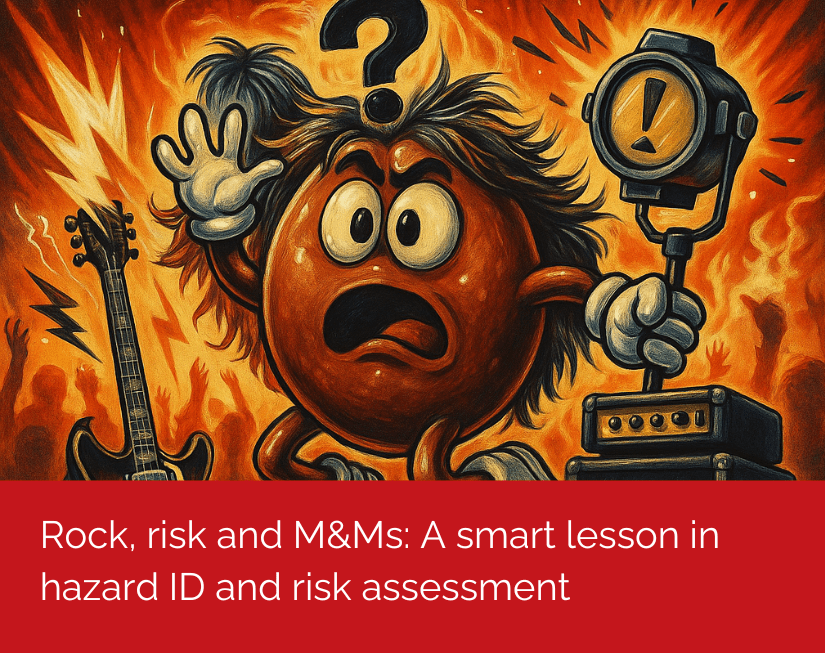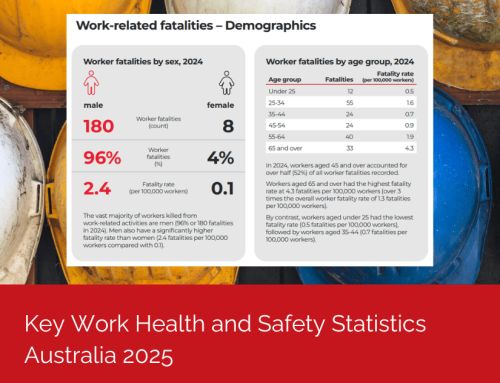
Van Halen, the American hair rock band of the ’80s, was infamous for one particular line buried deep in their performance contract:
Article 126: “There will be no brown M&M’s in the backstage area, upon pain of forfeiture of the show, with full compensation.”
To outsiders, it sounded like another diva rock star demand. But behind the scenes, it was actually a clever and effective hazard identification and risk management strategy.
A rock band’s unexpected hazard ID protocol
In his autobiography Crazy From the Heat, front man David Lee Roth revealed that the “no brown M&M’s” clause was far from frivolous — it was a risk management tool. Van Halen’s stage productions were massive for the time: nine semi-trailers’ worth of equipment, high-voltage setups, pyrotechnics, and complex staging requirements.
The band knew that a single overlooked safety detail — whether an overloaded power socket or insufficient structural support — could lead to equipment failure, injury, or worse.
To manage these risks, they embedded the brown M&M’s clause as a compliance tool. If the event team missed this small, quirky detail, it often meant they’d skipped or skimmed over vital technical requirements in the contract — raising a red flag that the entire production needed a thorough inspection.
Singer David Lee Roth explains:
“Van Halen was the first band to take huge productions into tertiary, third-level markets. We’d pull up with nine eighteen-wheeler trucks, full of gear, where the standard was three trucks, max. And there were many, many technical errors, whether it was the girders couldn’t support the weight, or the flooring would sink in, or the doors weren’t big enough to move the gear through. The contract rider read like a version of the Yellow Pages because there was so much equipment, and so many human beings to make it function.
So just as a little test, in the technical aspect of the rider, it would say ‘Article 148: There will be fifteen amperage voltage sockets at twenty-foot spaces, evenly, providing nineteen amperes…’ And article number 126, in the middle of nowhere, was: ‘There will be no brown M&M’s in the backstage area, upon pain of forfeiture of the show, with full compensation.’
So I would walk backstage if I saw a brown M&M’s in that bowl…..well, line-check the entire production. Guaranteed you’re going to arrive at a technical error. They didn’t read the contract. Guaranteed you’d run into a problem. Sometimes it would threaten to just destroy the whole show. Something like, literally, life-threatening”
Watch David Lee Roth explain the Van Halen Brown M&M clause:
What Van Halen teaches us about risk management
In Dan and Chip Heath’s book, Decisive, How to Make Better Decisions in Life and Work they summarise that “David Lee Roth was no diva; he was an operations master. In Van Halen’s world, a brown M&M was a tripwire.”
Van Halen’s approach wasn’t just clever — it was a perfect example of proactive risk assessment and control. They used a simple indicator to test for attention to detail, helping to prevent incidents before they could occur.
Today, we may not use sweets to identify safety gaps, but the principle is the same. Effective hazard identification involves looking beyond the obvious and building systems that reveal where procedures are being followed — and where they’re not.
From site inspections and compliance checklists to behavioral observations and tripwire audits, a complete risk management program ensures hazards are spotted early and dealt with before they become incidents.






